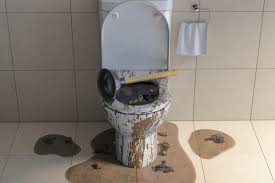Plumbing problems are a common issue in households and commercial properties alike. From leaky faucets to clogged drains, these issues can cause significant inconvenience and even damage if left untreated. In this article, we will explore some of the most frequent plumbing problems, their causes, and practical solutions to address them.One of the most prevalent plumbing problems is a leaky faucet. This issue not only wastes water but can also lead to higher utility bills. The primary causes of a leaky faucet include worn-out washers, O-rings, or valve seats. To fix this, you can:
- Turn off the water supply to the faucet.
- Disassemble the faucet to inspect the components.
- Replace any damaged parts, such as the washer or O-ring.
- Reassemble the faucet and test for leaks.
Another common issue is a clogged drain. Whether it’s in the kitchen sink, bathroom, or shower, clogs can disrupt daily activities. Clogs are often caused by the accumulation of hair, soap scum, food particles, or grease. Here’s how you can tackle a clogged drain:
- Use a plunger to create suction and dislodge the clog.
- If the plunger doesn’t work, try a drain snake to remove the obstruction.
- For stubborn clogs, consider using a natural solution like baking soda and vinegar.
- Avoid chemical drain cleaners, as they can damage pipes over time.
Running toilets are another frequent plumbing problem. A toilet that runs continuously can waste hundreds of gallons of water daily. The usual culprits are a faulty flapper valve, an imbalanced float, or a fill tube issue. To fix a running toilet:
- Check the flapper valve for wear and tear and replace it if necessary.
- Adjust the float to ensure it’s at the correct water level.
- Inspect the fill tube and ensure it’s properly connected.
Low water pressure is another issue that many homeowners face. This can be caused by mineral buildup in pipes, a partially closed shut-off valve, or a leak in the system. To address low water pressure:
- Check the shut-off valve to ensure it’s fully open.
- Clean faucet aerators to remove mineral deposits.
- Inspect pipes for leaks or corrosion.
Water heater problems are also common, especially during colder months. Issues like no hot water, strange noises, or leaks can arise due to sediment buildup, a faulty thermostat, or a broken heating element. Here’s what you can do:
- Flush the water heater to remove sediment.
- Check the thermostat settings and adjust if needed.
- Inspect the heating element and replace it if necessary.
Sewer system backups are among the most severe plumbing problems. They can cause foul odors, slow drains, and even health hazards. Tree roots, broken pipes, or clogs in the main sewer line are typical causes. To handle a sewer backup:
- Avoid using any plumbing fixtures to prevent further damage.
- Contact a professional plumber to inspect and clear the blockage.
- Consider installing a backwater valve to prevent future backups.
Frozen pipes are a significant concern in colder climates. When water freezes inside pipes, it can cause them to burst, leading to extensive damage. To prevent frozen pipes:
- Insulate exposed pipes with foam sleeves.
- Keep cabinet doors open to allow warm air to circulate around pipes.
- Let faucets drip slightly during extreme cold to relieve pressure.
In conclusion, plumbing problems can range from minor annoyances to major emergencies. By understanding the common issues and their solutions, you can take proactive steps to maintain your plumbing system. However, for complex problems or if you’re unsure about DIY fixes, it’s always best to consult a professional plumber to avoid further complications.

